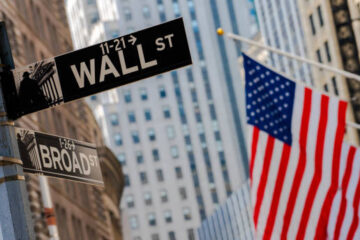For more than a decade Wall Street’s best strategy has been ‘don’t fight the Fed.’ It still is, James ‘Rev Shark Deporre writes.
Over the past 12 years, The Federal Reserve certainly has embraced a dovish attitude on interest rates, and investors who danced to the same tune profited significantly.
Now the bird has turned and traders face a more hawkish Fed, and may be tempted to take an aggressive tone against the agency’s aggressive interest rate policy.
“The single best piece of market advice since the bear market and recession of 2008-2009 has been “don’t fight the Fed,” wrote James “Rev Shark” Deporre recently on Real Money. “If you heeded that advice and stayed long, then you’ve been on the correct side of the action for the last 12 years.”
For years the bears have been predicting that the easy Fed was going to produce inflation. Back in 2010-2011 there was a chorus of bears predicting that interest rates were about to fly higher. Some even said that rates were at a generational low.
“That proved to be wildly incorrect, but those inflation fears suddenly are now becoming real,” Deporre said. “The combination of supply chain issues and the massive Fed liquidity is pressuring bonds and pushing up rates.”
That pressure is ramping up in the first week of January.
“On Wednesday, the market was surprised by the hawkishness of the Fed that was apparent in the minutes of its last meeting,” Rev Shark said. “There was a tacit acknowledgment that it is behind the curve and may need to raise rates more aggressively than anticipated. The Fed’s pattern for years has been incrementalism, and now there is about an 80% chance of a rate hike in March, with maybe even more hikes likely to follow quickly.”
Not fighting the Fed when it was dovish was great advice, and many market players now are thinking that they might want to fight the Fed when it is hawking. “The news Wednesday created drastic corrective action in big-caps and the FATMAAN names for the first time in a while,” Rev Shark added. “Many of the big-caps are barely off their recent highs, so they are vulnerable, and that’s making market participants nervous.”
The great dilemma of this market is a wide gulf between the liquid mega-caps that have benefited the most from the Fed’s infusions of liquidity and thousands of other stocks that have been in deep corrections and bear markets since February 2021.
“Currently, all these badly battered names that are already near 12-month lows are not able to find good support,” Deporre said. “They’re being pushed even lower as market players dump everything regardless of valuation or merit.”
“There are many stocks that have tremendous values and will eventually be recognized, but right now we can’t fight a hawkish Fed,” he added.


